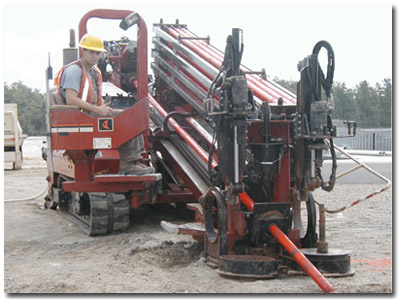Exploring Energy Frontiers: Expertly Handling Directional Boring
In the current quickly changing energy environment, horizontal drilling is now recognized as a pivotal technique that is transforming how we access natural resources and install vital infrastructure. For newcomers, grasping what directional drilling entails can be a game-changer. This innovative approach enables drilling teams to access targets not directly below the drilling location, thus maximizes efficiency and reducing environmental impact. Whether you are in the oil and gas sector, directional drilling offers a flexible solution suitable for a variety of applications.
The methods behind directional drilling has significantly advanced over the years, evolving into a sophisticated process that incorporates advanced tools and techniques. The ability to drill at various angles—whether it is vertical, horizontal, or even multi-directional—creates opportunities previously thought impossible. By exploring the intricacies of the workings of directional drilling, the advantages of this technique compared to traditional methods, and the challenges faced in difficult environments, you will discover the importance of this method for urban infrastructure and the prospects of energy projects. By mastering the principles and practices of directional drilling, professionals can not only improve project results but also aid in a more sustainable and efficient energy future.
Understanding Directional Drilling
Directional drilling is a method used to create wells at a number of inclinations, rather than solely in a vertical manner. This process permits drillers to access hydrocarbons deposits that are found underground at substantial ranges from the vertical access point. By guiding the drilling device along a planned route, workers can target several objectives from a single drilling site, enhancing material extraction and lessening surface disruption.
The development of directional drilling techniques has changed the energy field. Originally designed for oil and gas, this method has expanded to many applications including utility projects and pipeline construction. Modern advancements in machinery and techniques, such as rotary steerable systems and sophisticated downhole tracking, have enhanced the efficiency and accuracy of directional drilling, making it a popular option for many types of installations.
In furthermore its diverse uses, directional drilling offers substantial benefits over traditional vertical drilling approaches. Not just does it reduce the ecological footprint by reducing surface impacts, but it additionally enables for more rapid finishing of assignments. The capacity to bore in difficult areas and critical areas additionally demonstrates why directional drilling is crucial in the current energy sector, making it a crucial component for metropolitan projects and alternative energy initiatives too.
Positive Aspects of Directional Boring
Directional boring offers several important benefits over traditional vertical borehole methods. One of the primary advantages is its capacity to reach difficult-to-access areas that would otherwise be hard or impossible to drill conventionally. By allowing the drill to be positioned horizontally, operators can access several locations from a one drilling location, resulting in enhancing the efficiency of resource extraction. This not only saves time but also lowers the quantity of drilling sites needed, making it a more economical method.
Another crucial benefit of directional drilling is the decrease of surface impact. In urban environments or ecologically sensitive areas, minimizing the effect on the surface is vital. click for more info allows for installations beneath preexisting structures, roads, and waterways without affecting the surface above. This characteristic makes it perfect for projects that demand accuracy and minimal ecological disturbance, improving its appeal in urban infrastructure and utility installations.
Economic benefits are also a notable benefit of directional boring techniques. By cutting down the need for multiple drilling sites and reducing surface disturbance, projects can be completed more quickly and at a reduced overall cost. Additionally, the technology helps in accurately placing resources, which minimizes waste and enhances the return on investment. here , coupled with the ecological advantages, position directional boring as a preferred choice in multiple industries.
Outlook of Directional Borehole Technology
The potential of directional borehole technology looks optimistic, driven by progress in tech and a growing demand for optimal and eco-friendly energy solutions. As the sector keeps to evolve, breakthroughs such as AI and automation are boosting the precision of drilling operations. These technologies facilitate for more exact bore path designing and live corrections, reducing the chance of expensive mistakes and boosting overall project productivity.
Furthermore, the integration of electronic tools, like software and sophisticated sensors, is set to transform the way directional borehole technology is performed. By supplying engineers and operators with critical data intelligence, these tools aid in tracking drilling performance and ecological effects. This transition towards a more data-driven approach not only boosts operational efficiency but also promotes the industry's responsibility to reducing environmental harm.
As the attention on sustainable infrastructure mounts, directional drilling will play a crucial role in confronting the challenges of urban development and environmental conservation. With its capacity to reduce surface disruption and effectively install utilities below ground, this technique is not only critical for energy projects but also fundamental for facilitating the development of sustainable urban environments. As industry professionals keep to embrace these innovations, the outlook of directional borehole technology will undoubtedly be marked by increased performance, sustainability, and capability.
